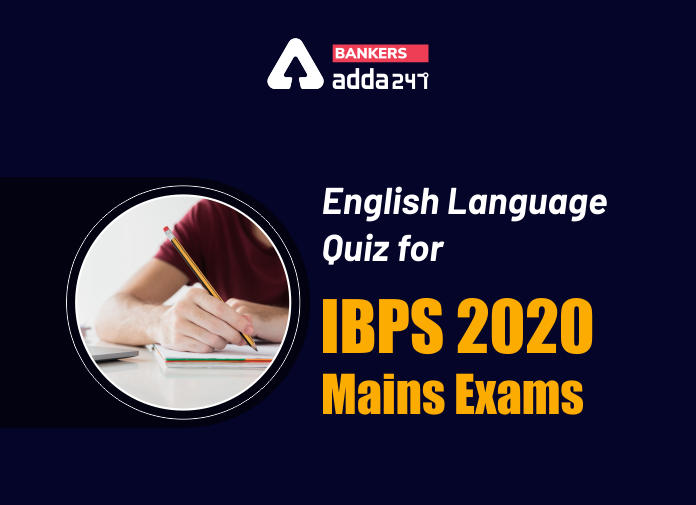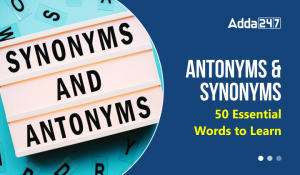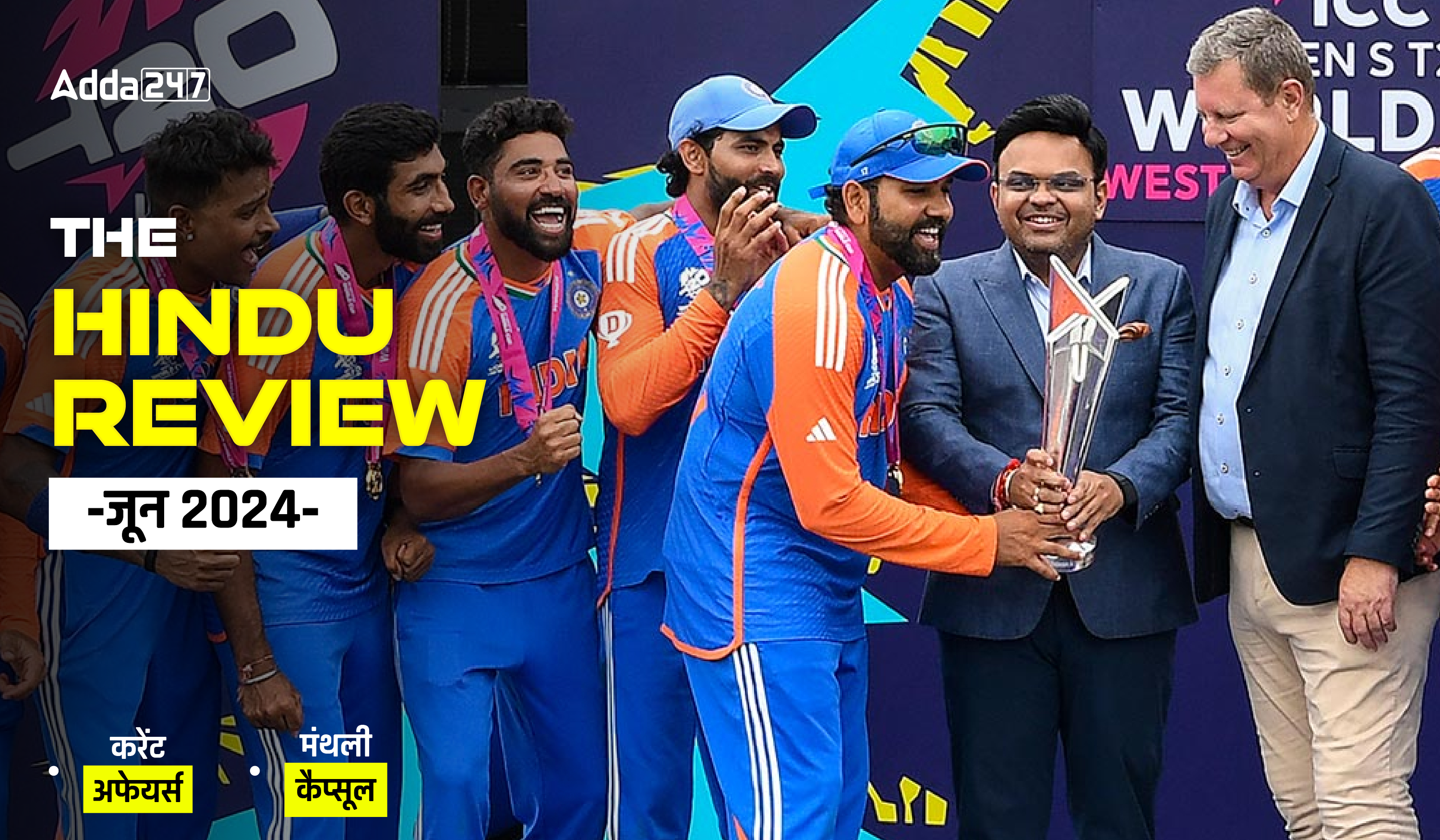
Directions (1-10): Read the following passage carefully and answer the questions given below it. Certain words/phrases are given in bold to help you locate them while answering some of the questions.
In the town where, Abhiram painted pictures of goods and goddesses, everyone knew him only as a stranger who had always painted pictures for a living. No one knew him or his past. He would think, “I was once wealthy but it’s all gone now.. and in a way it is for the better. I meditate on various forms of God all day long now. My bread and butter comes from that. I also place His image in all the houses. No one can take away the respect and goodwill this earns me.” One day the royal minister passed away. The king employed a new minister from a foreign land. The whole town was abuzz with the news but that day Abhiram’s fingers stilled to a halt. Abhiram’s father had adopted an orphan boy whom he had raised and trusted more than his own son, Abhiram. But the boy had turned traitor and had stolen the old man’s fortune from him. The very same man had now come to the new kingdom as the new minister. The room where kingdom painted was also his puja room. He went in, folded his hands and queried, “Is this why I have spent so many years meditating on you through every colour, every line? Is this how you reward me – with such an insult?”
The chariot pageant was coming up. At the fairgrounds many people from different lands thronged to buy Abhiram’s pictures. In that throng, there was a little boy watched over by servants. He picked out one picture. Abhiram turned to the child’s attendant and asked, “Who is the boy?” He replied, “The only son of our royal minister.” Abhiram covered his painting with a cloth and said, “I will not sell my pictures”, which only made the child want the picture even more. He came home and sulked in the corner and refused to eat. The minister sent a bagful of coins for Abhiram, but the bag came back to the minister untouched. The minister said to himself, “What audacity!” The more he was pestered, the more dogged was Abhiram’s refusal and he thought, “This is my victory.”
Every morning the first thing Abhiram did was to paint a picture of his own beloved deity. This was the only form of worship known to him. One day he realised the painting wasn’t to his satisfaction. Something looked different. It wasn’t looking right. He fell tormented. As the days passed, the subtle difference became more apparent until one day Abhiram looked up, startled by the realisation… he could see it clearly now – the face of his God was beginning to look more and more like the minister. He hurled his brush to the ground and said, “So the minister wins!” That same day he took the painting to the minister and said, “Here is the picture. Give it to your son.” The minister asked, “how much?” Abhiram said, “You robbed me of my devotion to God. I shall gain it back by gifting you this picture.” The minister had no idea what he was talking about.
Q1. Which of the following cannot be said that about Abhiram?
I. Abhiram used to meditate and pray every morning that God would make him prosperous.
II. Abhiram refused to sell the painting to the little boy because the boy did not speak to him politely
III. Abhiram had been a businessman in the past.
(a) All – (I), (II) and (III)
(b) Both (I) and (III)
(c) Only (II)
(d) Both (II) and (III)
(e) None of these
Q2. Why did Abhiram paint a picture of one particular deity every morning?
(a) His paintings of this particular deity were very popular and he sold many of them
(b) He kept trying to paint the picture well but he never succeeded
(c) In memory of his father who had great devotion for the deity
(d) It was his away of praying
(e) None of these
Q3. Why did Abhiram refuse to accept the money that the minister sent him?
I. He wanted the minister to give him more money in person.
II. He had a grudge against the minister and wanted to punish him.
III. He was angry because the minister did not recognize and acknowledge him as a brother.
(a) Only (II)
(b) Only (I)
(c) Only (III)
(d) Both (I) and (III)
(e) None of these
Q4. Why did the minister send a bagful of gold to Abhiram’s house?
(a) As penance for taking Abhiram’s rightful share of their father’s property
(b) He admired artists and wanted to pay his respects to Abhiram
(c) As a bribe to ensure that Abhiram would keep their past a secret
(d) He wanted to purchase a painting that his son was determined to have
(e) As payment for the portraits that he wanted Abhiram to paint
Q5. Why was Abhiram disappointed with his most recent painting?
(a) Despite his best efforts, he could not get the painting to resemble the minister
(b) Attention to details which made his paintings so popular was missing
(c) Instead of resembling the replica of a deity, the painting looked like a portrait of the minister
(d) Since he was unable to paint the lighting effects properly, the deity did not look life-like in the portrait
(e) There was nothing wrong with the painting; Abhiram was a perfectionist
Q6. What was Abhiram’s first reaction when he heard about the appointment of the new royal minister?
(a) He decided not to sell his paintings at the chariot pageant
(b) He stopped praying because he believed that God had abandoned him
(c) He gave up his career as an artist
(d) He asked God to punish the minister
(e) None of these
Q7. Choose the word which is most nearly the same in meaning as the word given in bold as used in the passage.
audacity
(a) courage
(b) fear
(c) insult
(d) rudeness
(e) adventure
Q8. Choose the word which is most nearly the same in meaning as the word given in bold as used in the passage.
idea
(a) image
(b) understanding
(c) design
(d) plan
(e) example
Q9. In questions choose the word which is most opposite in meaning of the word given in bold as used in the passage.
gain
(a) lose
(b) decrease
(c) lack
(d) fail
(e) loss
Q10. In questions choose the word which is most opposite in meaning of the word given in bold as used in the passage.
dogged
(a) polite
(b) weak
(c) unstable
(d) soft
(e) unsure
Directions (11-15): Each of the following questions has a paragraph from which one sentence has been deleted. From the given options, choose the one that completes the paragraph in the most appropriate way.
Q11. The Supreme Court of India is facing its worst crisis of credibility since the Emergency. With an occasional exception, the quality of the court’s reasoning, the inconstancy of its judgment, the abdication of its constitutional role in some cases, and its overreach in others, are already denting its authority. _________________________________________. It will also create the conditions under which it will be easier to legitimise diluting judicial independence.
(a)But Justice Chelameswar’s order setting up a five-judge bench also made the judiciary vulnerable.
(b)But consider the different ways in which the judiciary has now rendered itself vulnerable.
(c)But the institutional crisis that the Supreme Court has now created for itself will puncture more holes in the authority that it so valiantly tried to exert.
(d)But a lot of care needs to be exercised so that the anti-corruption measures taken do not undermine the independence of the judiciary.
(e)But a clamour for reforms that undermine independence in the name of accountability will be a natural consequence of the current chain of events.
Q12. Like all modernists, Nehru too was a child of science and its grand promise of the light of reason, its explanatory capacity and its ability to expand the zones of certainty in an otherwise uncertain world. With “scientific temper” — “a process of thinking, a method of acting and associating with our fellow men” — he sought to fight the “dead weight of past” and give India the “garb of modernity”. In Nehru’s romance with science, I guess, there was idealism. ___________________________________________. In fact, Nehru’s ideal science person was more like the courageous/idealist doctor Satyajit Ray projected in his film Ganashatru (Enemy of people) — a doctor who could dare to fight the temple authority by showing that the outbreak of jaundice in the locality is because of the contaminated water in the temple that the devotees are taking mindlessly.
(a)Even though he loved industrial development and technological miracles like big dams, his “science” was still not like technocratic rationality, the way global capitalism has reduced it into a principle of corporate trade and reckless domination of people and nature.
(b)A “secular” Nehru, I believe, was more sensitive to the fineness of spiritual wonder than what these days the zealots and state-sponsored celebrity babas are doing.
(c) His scholarship, his passion, and his wonder I miss in a political culture that taps the simulation of 24X7 television channels and networking of social media, and projects the dramaturgical performance of narcissistic leaders without philosophic depth and real substance.
(d)The “elitism” of Nehru notwithstanding, his sensitivity, I would say, opens our eyes to seeing beyond loud modernity, loud nationalism and popular culture.
(e)And despite my unease with scientism and soulless atheism, I continue to be fascinated by secular Nehru’s openness and philosophic perplexity.
Q13. Under the second phase of Regional Connectivity Scheme (RCS), which aims to provide air connectivity to the hinterland to provide an impetus to the economic growth of regional centres, including unconnected towns and cities, the government decided to keep the focus on ‘priority areas’ including the North-East, Jammu & Kashmir and other hilly regions of the country. In the list of routes awarded in the first phase of the scheme, announced in March, only six airports in the North-East — Shillong, Dimapur, Imphal, Silchar, Aizawl and Agartala — were connected. _____________________________________
(a)The other airports are under the aegis of either the AAI, or respective state governments.
(b)The window for air operators to bid for routes under the second phase of RCS started on August 24, four days before Indian and Chinese troops disengaged at Doklam to end a border standoff that lasted more than two months.
(c)The airports and helipads in Arunachal Pradesh fall under the category of ‘unserved’ airports, meaning they have no civilian flights landing there.
(d)The Tezu airport in Arunachal Pradesh has also been upgraded by the AAI with a renovated terminal building at a cost of Rs 96.50 crore.
(e)The first round did not involve routes to Jammu & Kashmir.
Q14. The quad’s significance, however, lies in the future. That President Donald Trump referred to the region as “Indo-Pacific” is a reflection of the emerging expectations from India amidst the increasing unsustainability of the present Asian order. The rise of China, the expansion of its military capabilities and Beijing’s assertiveness on territorial disputes has ended the prolonged tranquility in the region. China’s pressure on its neighbours is weakening the unity of the ASEAN and limiting the options of most countries — big and small — in the region. The US, which has long dominated Asian order, as well as many of China’s neighbours, want Delhi to contribute a lot more to regional peace and security. ___________________________________________________
(a)India is the laggard in the negotiations on the ASEAN framework for Regional Comprehensive Economic Partnership (RCEP).
(b)On his part, the PM has signalled India’s intent to promote a rules-based architecture in Asia.
(c)If Trump has shocked the region by pulling America out of the Trans-Pacific Partnership (TPP) talks and China is claiming the leadership of Asian regionalism, Delhi is paralysed.
(d)The conversation between the four capitals on reviving the quad has been taking place for some time.
(e)That the meeting took place in Manila on the margins of the annual ASEAN-led meetings was just a matter of diplomatic convenience.
Q15. The report presents a two-pronged challenge for policymakers. The large-scale variation in the disease patterns across the country means that one health policy and uniform health-related schemes are unlikely to work in all the states. ______________________________________. One nugget of information in the report throws light on the enormity of this problem: Kerala had the lowest disease burden due to malnutrition in India, but even that was 2.7 times higher per person than in China. That said, policymakers in the country should see the report as an opportunity. After all, it addresses their longstanding grievance about the paucity of data on India’s disease burden.
(a)Since then, several studies have tried to understand the contours of this shift in the country’s disease burden.
(b)But worryingly, the study upturns the widespread perception that states performing well on economic yardsticks are also doing well on health indicators.
(c)Major national surveys, such as the National Family Health Survey and the Annual Health Survey, have provided valuable data on key health indicators, and several states have generated data on non-communicable diseases such as diabetes and heart ailments.
(d)But at the same time, the persistence of communicable diseases and malnutrition means that efforts to tackle these maladies have to be scaled up.
(e)However, a comprehensive assessment of every major disease across all states of the country, providing estimates over an extended period, has eluded policymakers.
SOLUTIONS:
Solutions
S1. Ans.(a)
Sol. Abhiram didn’t meditate to have prosperity; he refused to sell the painting to the boy because the boy was the son of the new royal minister who had stolen Abhiram’s father’s fortune; and it is not mentioned that Abhiram had been a business man once .So all the options cannot be said about Abhiram.
S2. Ans.(d)
Sol. Read the 1st two sentences of the paragraph 3 ,“This was the only form of worship known to him”.
S3. Ans.(a)
Sol. I and II are not true in context of the passage; (III) is, as evident from paragraphs 1 and 2.
S4. Ans.(d)
Sol. When Abhiram refused to sell his painting that only made the child want the picture even more and hence he sent a bagful of coins.
S5. Ans.(c)
Sol. He fell tormented, refer to the 3rd paragraph of the passage, “the face of his God was beginning to look more and more like the minister”.
S6. Ans.(e)
Sol. Abhiram’s ‘fingers stilled to a halt’ it was the first reaction.
S7. Ans.(c)
Sol. Audacity means rude or disrespectful behaviour; impudence hence insult is the word most similar in meaning.
S8. Ans.(b)
Sol. Idea means a thought or suggestion as to a possible course of action hence understanding is the word most similar in meaning.
S9. Ans.(a)
Sol. Gain means to obtain or secure (something wanted or desirable) hence lose is the word most opposite in meaning.
S10. Ans.(e)
Sol. Dogged means ‘stubborn’ and ‘obstinate’ hence unsure is the word most opposite in meaning.
S11. Ans. (c)
Sol. Read the paragraph carefully, it is about the crisis of credibility that the Supreme Court of India is facing since the Emergency. Among the given options, there is only sentence (c) that fits perfectly into the blank space. The sentence adds meaning to the paragraph and at the same time it correctly follows the first and the second sentences of the paragraph. Other options are irrelevant in the context of the paragraph. Hence (c) is the correct choice.
S12. Ans. (a)
Sol. The paragraph is about Nehru’s way of seeing the world, his ideas of science and idealism associated with it. The last sentence of the paragraph gives an apt evidence that the sentence preceding it would be option (a). Moreover, among the given options, only statement (a) fits perfectly into the paragraph as it continues on the same theme as the paragraph. Other options are irrelevant in the context of the paragraph. Hence (a) is the correct choice.
S13. Ans. (e)
Sol. The given paragraph is about the first and the second phases of Regional Connectivity Scheme (RCS), which aims to provide air connectivity to the hinterland to provide an impetus to the economic growth of regional centres, including unconnected towns and cities. Read the last two sentences of the paragraph carefully, it gives a direct clue that option (e) provides the most appropriate conclusion to the paragraph as it maintains the flow of the theme. Moreover, it carries a logical sequence to other sentences given in the paragraph. Other options are not relevant enough to be the part of this particular paragraph. Hence (e) is the correct choice.
S14. Ans. (b)
Sol. The paragraph is about the quadrilateral security dialogue between senior officials of India, United States, Japan and Australia. Among the given options, there is only sentence (b) which finds some connection with the paragraph and at the same time it concludes the paragraph in the best manner, adding meaning to it. Other options are not feasible enough to make the paragraph complete and conclusive. Hence (b) is the correct choice.
S15. Ans. (d)
Sol. The paragraph is all about the new report that addresses need for data on the country’s disease burden and identifies challenges for policymakers. Among the given options, only sentence (d) fits perfectly into the blank space as it follows the sentence prior to the space as well as the one following it. It brings the continuity into the meaning of the paragraph. Other options are not relevant enough to bring about a similar meaning to the paragraph. Hence (d) is the correct choice.


 English Language Notes for Competitive E...
English Language Notes for Competitive E...

